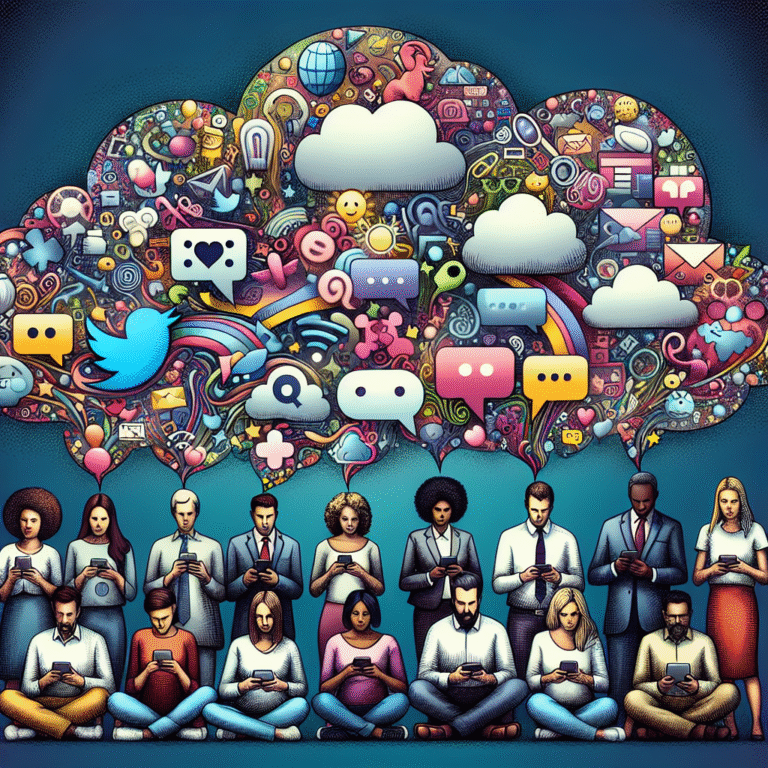
Introduction
In today’s increasingly interconnected world, the importance of teamwork cannot be overstated. From corporate settings to sports teams, the ability of groups to work effectively together can often be the key to success. Yet, what truly drives group performance? The Psychology of Teams: Exploring the Intricacies of Group Dynamics unpacks this nuanced topic, shedding light on how psychological principles influence collaboration. Understanding these dynamics is not just beneficial; it’s essential for achieving collective goals and fostering a positive work environment.
The Fundamentals of Team Dynamics
What Are Team Dynamics?
Team dynamics refer to the behavioral relationships and interactions that occur within a group. The psychological framework behind these dynamics encompasses individual behaviors, influences of group roles, and the intricate relationships that develop. Understanding this complexity lays the groundwork for more effective collaboration.
The Stages of Team Development
One of the most popular models explaining team dynamics is Tuckman’s stages of group development, which include:
Forming: Team members get to know each other. Early interactions are characterized by politeness as individuals gauge their roles.
Storming: Conflicts may arise as team members confront one another’s ideas and working styles.
Norming: The team begins to establish norms and a work rhythm, fostering a sense of cohesion.
Performing: At this stage, the team functions at a high level. Relationships are well-established, and productivity peaks.
- Adjourning: Finally, when a project ends, the team members reflect on their accomplishments and disband.
Understanding Tuckman’s model is vital for leaders aiming to facilitate effective teamwork.
The Psychology Behind Team Interactions
The Role of Individual Differences
In the realm of The Psychology of Teams: Exploring the Intricacies of Group Dynamics, individual differences play a critical role. Factors such as personality traits, cultural backgrounds, and personal experiences shape how team members approach tasks and communicate.
Case Study: Google’s Project Aristotle
In a study known as Project Aristotle, Google analyzed over 180 teams to determine what makes them successful. They discovered that psychological safety—confidence that one will not be penalized for speaking up—was the most significant factor contributing to high-functioning teams. This case illustrates that the individual’s comfort level impacts overall dynamics, proving that emotional intelligence is vital in group settings.
Group Cohesiveness vs. Groupthink
Group cohesiveness can lead to increased morale and productivity, but it’s essential to balance this with critical thinking. When teams become too cohesive, the risk of groupthink increases—where consensus is favored over critical analysis.
Table 1: Key Differences between Group Cohesiveness and Groupthink
| Aspect | Cohesiveness | Groupthink |
|---|---|---|
| Decision-making | Encourages diverse opinions | Prioritizes consensus |
| Creativity | Promotes innovation | Affects creative problem-solving |
| Conflict | Managed constructively | Suppressed for harmony |
Being aware of these dynamics allows teams to harness the power of cohesiveness while avoiding the pitfalls of groupthink.
Leadership’s Role in Team Dynamics
Transformational Leadership
Effective leaders play a crucial role in shaping team dynamics. Transformational leadership fosters a climate of trust, motivation, and innovation. By inspiring and empowering team members, leaders can unlock higher levels of performance.
Case Study: The Transformation of IBM
Under Lou Gerstner’s leadership, IBM shifted its focus from a hardware-centric approach to a service-oriented model. The transformation involved creating cross-functional teams that encouraged collaboration. Gerstner’s emphasis on communication, accountability, and empowerment exemplifies how leadership can influence team dynamics in a positive way.
Conflict Resolution Strategies
Conflict is an inevitable part of teamwork. However, how leaders address it can make all the difference. Effective conflict resolution strategies can ensure conflicts are managed constructively rather than destructively.
- Open Dialogue: Encourage team members to express their viewpoints openly.
- Mediation: As a leader, facilitate discussions and mediate disagreements.
- Focus on Interests, Not Positions: Shift the conversation from personal interests to group goals.
Leaders who adopt these strategies contribute significantly to healthier group dynamics.
Emotional Intelligence in Teams
Understanding Emotional Intelligence
Emotional intelligence (EI) involves the ability to recognize, understand, and manage our own emotions, as well as those of others. It is a crucial component of teamwork.
Case Study: The Importance of EI in Healthcare Teams
In healthcare settings, where teams often confront high-stress situations, the emotional intelligence of team members has been linked to improved patient care and team performance. A study found that teams exhibiting high levels of EI were more cohesive and effective in communication, leading to better patient outcomes.
Building Emotional Intelligence in Teams
Leaders can encourage emotional intelligence through training and development programs focused on:
- Self-awareness
- Empathy
- Relationship management
By promoting EI, teams can improve communication and collaboration, creating a more supportive work environment.
The Impact of Technology on Team Dynamics
Virtual Teams
In a world increasingly driven by technology, virtual teams have become more common. Though they offer benefits such as flexibility, they also present unique challenges.
Case Study: Dell’s Flexible Workforce
Dell has leveraged technology to enable a flexible workforce that fosters inclusivity and diversity. Virtual teams at Dell have been shown to be just as effective, if not more so than in-person teams, thanks to effective communication tools and a results-oriented culture. This underscores the importance of adapting group dynamics strategies to fit virtual platforms.
Tools for Enhancing Team Collaboration
With the advent of collaborative tools, teams can enhance productivity and streamline communication. Software like Slack, Trello, and Microsoft Teams facilitate interaction and task management, thereby improving overall dynamics.
Measuring Team Dynamics
Key Performance Indicators (KPIs)
To improve team dynamics, it’s essential to measure their effectiveness. Key performance indicators (KPIs) like team engagement scores, project completion rates, and quality of deliverables can provide insights.
Table 2: Common KPIs for Measuring Team Dynamics
| KPI | Description |
|---|---|
| Team Engagement Score | Gauges how connected members feel |
| Project Completion Rate | Measures timely delivery of work |
| Quality of Deliverables | Evaluates the standard of output |
Utilizing KPIs allows organizations to identify areas for improvement and track progress in team dynamics.
Conclusion
The Psychology of Teams: Exploring the Intricacies of Group Dynamics reveals the multifaceted nature of teamwork. From understanding individual differences to the role of leadership, emotional intelligence, and technology, each aspect contributes to the overarching structure of team dynamics. By fostering an environment of communication, trust, and empowerment, organizations can manipulate these factors to enhance group performance.
As you embark on your journey to cultivate better teams, remember that each member is a unique thread weaving the fabric of collaboration. Embrace diversity, foster psychological safety, and be open to feedback. The potential for success is limitless when teams function effectively.
FAQs
1. What are the main factors influencing team dynamics?
Key factors include individual differences, leadership styles, emotional intelligence, group cohesiveness, and external environmental influences.
2. How can emotional intelligence improve team dynamics?
Emotional intelligence enhances communication, empathy, and conflict resolution, leading to healthier team interactions.
3. What is the role of leadership in team dynamics?
Leaders shape team dynamics by setting a vision, encouraging collaboration, and managing conflicts, which all contribute to team effectiveness.
4. How can organizations measure the dynamics of their teams?
Organizations can utilize KPIs such as engagement scores, project completion rates, and quality assessments to track team dynamics.
5. What strategies can reduce the risk of groupthink?
Promoting open dialogue, encouraging diverse opinions, and prioritizing critical analysis over consensus can mitigate groupthink in teams.
By understanding The Psychology of Teams: Exploring the Intricacies of Group Dynamics, you are equipped not just with knowledge but actionable insights. Implement these principles in your own teams to foster an environment of success, collaboration, and growth.

















